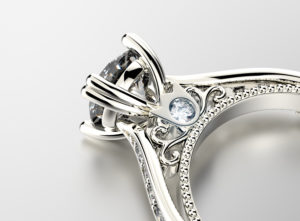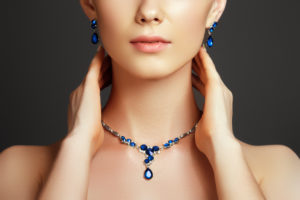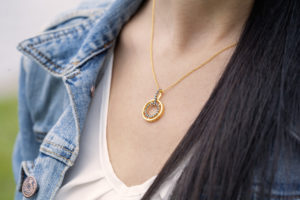As a shopper of luxury jewelry, you should know and understand some key jewelry terms. Shop from a position of strength and confidence. There is no substitution for being prepared!
Before you head to the jewelry counter, glance over the following jewelry terms:
1. 4-C’s: Four characteristics set by the Gemological Institute of America to evaluate the quality of a diamond. The four are: carat, color, clarity and cut.
2. Well-Cut: A diamond cutter will carefully cut a diamond in such a way so the facets reflect the maximum amount of light through the top to create sparkle and brilliance.
3. The Cut Style: One of the 4-C’s, the cut style refers to the different shapes; The primary four styles are diamond shape, step-cut, brilliant cut and mixed cut.
4. The Polish: The excellence of care used by the cutter to shape and facet a rough stone into a polished diamond.
5. The Good Finish: A good finish indicates the diamond cutter did an excellent job of creating a well-cut and expertly polished diamond from an uncut stone.
6. Fancy Cut: A fancy cut diamond is any cut other than round, which includes ovals and hearts. For instance, princess cut and emerald cut are considered to be fancy cuts.
7. Setting or Prong Set: A technique to hold gemstones in place using metal tines called prongs. Trellis setting is a decorative form of a prong setting that creates a latticework. Prong settings are the most popular because they are best to secure the stone.
8. Shape: The appearance of a gemstone’s shape, including round, triangular, oval, heart-shaped, square, pear or marquise.
9. Bezel Setting: A bezel setting is a raised metal surround with a lip that holds the gemstone in place by overlapping the edges of the stone. The metal may be etched or contain small jewels. It is used for rings, watches and necklaces.
10. Tension Setting: A tension setting uses compression or tension to hold a gemstone in place instead of prongs or a bezel. The metal setting has grooves and is spring-loaded putting pressure on the stone to hold it in place.
11. Solitaire: A single gemstone mounted in a setting alone, with no other gemstones. The simple beauty of one perfectly set stone is elegant.
12. Bar or Channel: Bar setting holds a line of gemstones in place with metal bars one each side of the stone to help secure the stones in their individual grooves. A channel is carved into the metal for a channel setting.
13. Precious Metals: Gold, Silver, and Platinum are the precious metals from which most quality jewelry is created.
14. Carat: The weight of diamonds and gemstones is measured in carats. One carat equals 200 milligrams. Each carat can be divided into 100 points. For example, a 75-point diamond is a ¾ carat stone. A paragon diamond is a flawless stone of at least 100 carats.
15. Clarity: One of the 4-C’s, clarity is the term used to describe the lack of flaws. Clarity affects the beauty of the diamond but even unseen flaws will affect the value.
16. Color Grade: Another of the 4-C’s used to value diamonds is color grade. The GIA color scale ranges from D (the highest value) down to Z, which is the least desirable. It actually is the absence of color that is being graded. D would have no color while Z would have obvious yellow and brown tones.
17. Hallmark: The Hallmark will be stamped inconspicuously on metals in jewelry to indicate level of precious metal contained in the piece. It could be 10K, 14K or 18k of gold, silver or platinum. FTC regulations require a company trademark to accompany the Hallmark.
18. Contemporary Metals: Metal alloys are not part of the precious metals group but they are used in low cost jewelry. The most commonly seen are titanium, tungsten, stainless steel and chrome.
19. Troy Ounce: One troy ounce equals 31.10 grams. This is the unit of weight used to weigh precious metals.
20. Chains: Precious metal chains are designed in loops, braids, S-links, snakes and others. The diamond cut chain is the most sparkling chain because the metal is cut to reflect light.
21. Pearls: The most valuable pearls are sourced from the wild and are very rare. Most luxury pearl jewelry includes freshwater or cultured pearls. Symmetry and luster are the two attributes that determine the value of a pearl.
22. Precious Gems: There are only four stones in the precious gemstone category: They are diamonds, rubies, sapphires and emeralds.
23. Semi-Precious Gems: If the stone is not a diamond, ruby, sapphire or emerald, then it is a semi-precious gem. Value depends on the scarcity, demand, symmetry and clarity of the stone. Garnets, topaz, amethyst and turquois are among the most popular semi-precious gems.
Remember these jewelry terms when you’re shopping luxury jewelry.
It’s good to become familiar with the various types of metals, settings, and gemstones. It will be easier to find what you want and understand what the jeweler is talking about if you do a little research in preparation for your visit. Now that you’ve brushed up on your jewelry terms, you can shop with confidence






